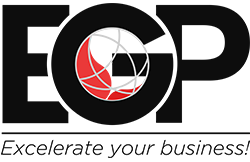This article first appeared on OneStream Software blog page by Nicholas Cox

Many of you in the Enterprise Performance Management (EPM) space immediately recognize the name Cartesis, regardless of whether you’re an actual customer. Before I dive into the nitty gritty about the positives and negatives of Cartesis, though, I’ll dive into a little of the history for those of you unfamiliar with the name.
A French company, Cartesis developed a product eventually renamed from Magnitude to Cartesis Finance. Cartesis Finance, the company’s flagship offering, was at the time (and using the company’s words) “the only fully integrated, web-based solution for enterprise performance management.”
Cartesis’ unique integrated data model supported the key financial management activities – planning, budgeting, forecasting, statutory consolidation, management reporting and performance management (see Figure). While the Cartesis Finance product was sold widely, including in the UK and US, with around 700-800 customers, a large percentage of customers were in France.

Figure 1 – Cartesis Suite Diagram & Integrated Data Model
Cast your minds back to 2007. At the time, significant “consolidation” occurred among EPM vendors. Oracle acquired Hyperion early in the year. Business Objects announced the acquisition of Cartesis the following month, and then SAP rushed to acquire OutlookSoft.
SAP went a step further in late 2007 and acquired Business Objects. This acquisition resulted in SAP owning multiple EPM solutions. While Cartesis Finance became SAP Business Objects Financial Close (BOFC), it was later renamed simply to SAP BFC.
Now that you know the history, I’ll dive into the positives and negatives of Cartesis/SAP BFC.
Cartesis/SAP BFC – The Positives
Cartesis Finance (previously Magnitude) was designed in France, a country known for having the most complex accounting and reporting rules in the world. Cartesis began as an internal project in the global French company Vivendi and was subsequently spun out into an independent company. The team therefore focused on the complexity of both global companies and the French accounting rules, targeting primarily the largest French companies and those in the CAC-40, France’s principal stock market index. The resulting solution was technically strong and could handle almost any challenge.
In Cartesis’ words, “Our powerful technology handles the complex but essential task of unifying information, people and processes in a single data model that can be applied easily and consistently across your company’s business.”
Below are the sweet spots for Cartesis’ product:
- Audit trail on consolidated data – Specific dimensionality to trace numbers from consolidated reports to source data.
- Strong controls on data collection – Data could only be loaded to valid intersections since tight control of data collection/entry environment is advantageous in large-scale consolidations.
- Administration by functional users – System was configuration-screen led and intuitive to learn.
- Consolidation Rule wizard – A strong feature in demonstrations with no coding/scripting required for rules, yet more sophisticated rules required SQL formulas in addition to the wizard.
- Multi-period capabilities – Strong periodic capability with dedicated dimensionality.
- Versioning on consolidations – Several consolidations could be run simultaneously with history maintained for quick reference back.
- Up to 40 dimensions available – A single Cartesis/SAP BFC instance would contain 22 fixed dimensions and users could create and store up to 18 user-defined dimensions.
Cartesis/SAP BFC also natively supported the elimination of inter-segment trading within a single legal entity with multiple business segments. Again, this feature intentionally supported only the largest, most complex consolidations.
In Cartesis/SAP BFC, all journal entry data was analyzed by a specific dimension dedicated to tracking journals, called “journal entry number.” Consequently, reports could be built that retrieved the detail of a specific amount based on the journal entry header. This type of report was extremely useful in determining how an amount is built up from the input level to the consolidated position – especially if multiple manual journal entries had been posted to the same account.
In sum, Cartesis/SAP BFC was much more capable than peer platforms at supporting several reporting cycles with differing analyses. The solution evolved to support the complex statutory consolidation requirements in the business models of the largest organizations. This evolution, however, was to the detriment of other requirements (e.g., budgeting, forecasting and cost & profitability requirements) – and the negatives of Cartesis didn’t end there.
Cartesis/SAP BFC – The Negatives
As alluded above, the evolution of Cartesis/SAP BFC continued a complex statutory consolidation trajectory. This trajectory eventually contributed to some challenges when other more comprehensive EPM technology suites appeared on the market that offered planning & budgeting capabilities or more advanced analytics.
Another major issue was the technical architecture of Cartesis/SAP BFC. The relational database design was complex, and SAP would eventually choose not to make the application available on HANA, creating an uncertain future where the product would only be supported for a set number of years.
Despite being a popular application, Cartesis/SAP BFC has the following recognized limitations:
- Data integration capabilities – Cartesis never provided a true ETL layer, neither within the application nor via a reselling agreement, so an SAP FIM implementation was required.
- Reporting capabilities – Cartesis/SAP BFC did offer integrated reports, which were static and did not provide the functionality needed for the ad-hoc reporting many users require.
- Excel add-in – The full version required an additional implementation of BusinessObjects Extended Analytics via an EPM add-in that required an OLAP cube for storage and data processing, which was not inherent in BFC’s architecture. There was also a lighter – Excel link – version available where GetData formulas could be used to retrieve data.
- Planning and allocation capabilities – Cartesis/SAP BFC had only limited planning capability and relied heavily on separate planning applications.
- Heavy administration burden – The number of screens to process was significant for most tasks, typically resulting in a higher number of administrators than other applications.
In the positives, I mentioned the tight control over the data collection/entry environment. Many users, however, found this control to be a negative over time. Why? Well, for data entry in Cartesis/SAP BFC, each specific data entry point had to be explicitly opened during the development phase. By default, all intersecting data points were blocked for data entry or importation. During implementation, the development team must then open each individual data point or ranges of data points. As you can imagine, this process caused delays and frustrations when new intersections needed to be opened.
The intuitive workflows that many users today are familiar with were not a feature of Cartesis/SAP BFC. Data submitted to Cartesis/SAP BFC had to follow a pre-defined process of being entered into a data entry environment known as the “package layer.” Once submitted to a package, data had to be validated, published and integrated. Publishing a package was the equivalent of stating the data within the package was available for review. Any amount not integrated (data would physically be copied to a pre-consolidated level) would not be selected by the consolidation. No deviation from this cumbersome submission process was allowed, which frustrated many users.
Finally, intercompany reconciliation/matching at balance and transaction was only available with a separate web-based tool called “Intercompany Server from Cartesis,” since re-branded to SAP Intercompany. Using the tool required manual data transfers to and from the actual data source.
SAP EPM – The Options for Cartesis/SAP BFC Customers
Many organizations are facing the end of support for their Cartesis/SAP BFC application, announced for 2027. Many customers will be forced to implement SAP S/4 HANA. Both those customers and those using other SAP Legacy EPM Systems for Consolidation and/or FP&A face high risks in following the SAP Strategy with Group Reporting and Analytics.
SAP’s vision for EPM is based on a combination of the new Group Reporting product for consolidations and SAP Analytics Cloud (SAC) for planning and budgeting. SAP Group Reporting and Analytics Cloud for Planning requires that customers move to S/4 HANA Cloud for their ERP.
To give customers enough time to transition to SAP S/4HANA for group reporting, SAP decided the following:
- SAP will provide mainstream maintenance for SAP BFC 10.1 until December 31, 2027.
- Considering SAP BFC solution maturity, SAP plans to end any new functional investment in this solution and consequently plans no new release or support packages for SAP BFC 10.1.
- The Customer Influence website for SAP BFC will be removed due to the discontinuation of future innovations for this solution.

Those decisions leave customers at risk. So if your organization uses Cartesis/SAP BFC, you have three choices:
- Choice 1: Continue with legacy Cartesis/SAP BFC until support ends.
- Choice 2: Invest in SAP’s unproven next-generation products, such as Group Reporting, Analytics Cloud, Central Finance or some variant hybrid strategy.
- Requires at least one S/4 HANA Finance instance for Group Reporting.
- Choice 3: Take control of your Finance Transformation by evaluating alternate EPM strategies such as OneStream.
To learn about those alternate strategies, make sure to tune in for our next blog in this series, in which we’ll examine the choices in more detail.
Learn More
Ready to join the organizations that have taken the step from Cartesis/SAP BFC to OneStream? Check out our video here, and be sure to visit our website.



